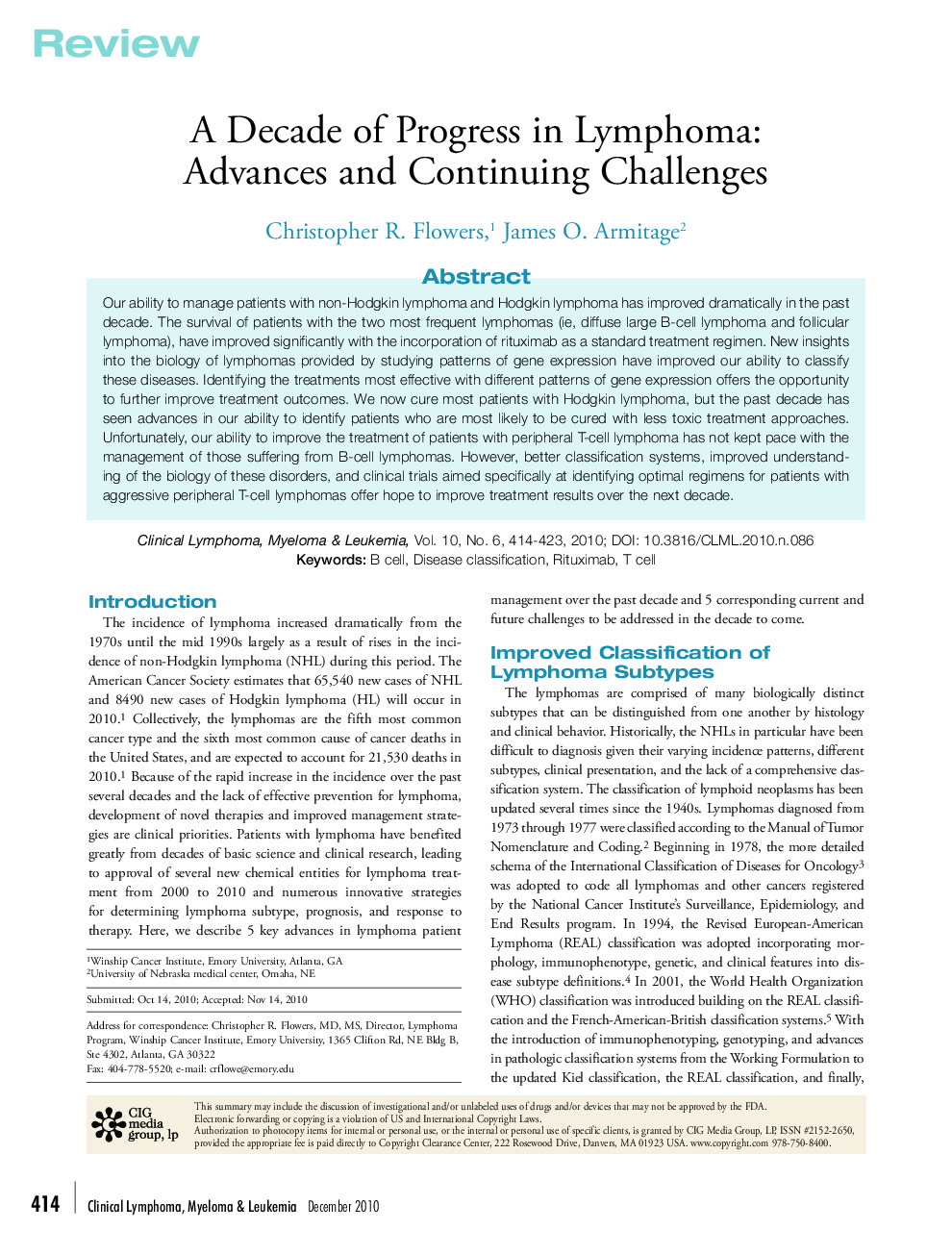| Article ID | Journal | Published Year | Pages | File Type |
|---|---|---|---|---|
| 2754751 | Clinical Lymphoma Myeloma and Leukemia | 2010 | 10 Pages |
Our ability to manage patients with non-Hodgkin lymphoma and Hodgkin lymphoma has improved dramatically in the past decade. The survival of patients with the two most frequent lymphomas (ie, diffuse large B-cell lymphoma and follicular lymphoma), have improved significantly with the incorporation of rituximab as a standard treatment regimen. New insights into the biology of lymphomas provided by studying patterns of gene expression have improved our ability to classify these diseases. Identifying the treatments most effective with different patterns of gene expression offers the opportunity to further improve treatment outcomes. We now cure most patients with Hodgkin lymphoma, but the past decade has seen advances in our ability to identify patients who are most likely to be cured with less toxic treatment approaches. Unfortunately, our ability to improve the treatment of patients with peripheral T-cell lymphoma has not kept pace with the management of those suffering from B-cell lymphomas. However, better classification systems, improved understanding of the biology of these disorders, and clinical trials aimed specifically at identifying optimal regimens for patients with aggressive peripheral T-cell lymphomas offer hope to improve treatment results over the next decade.
